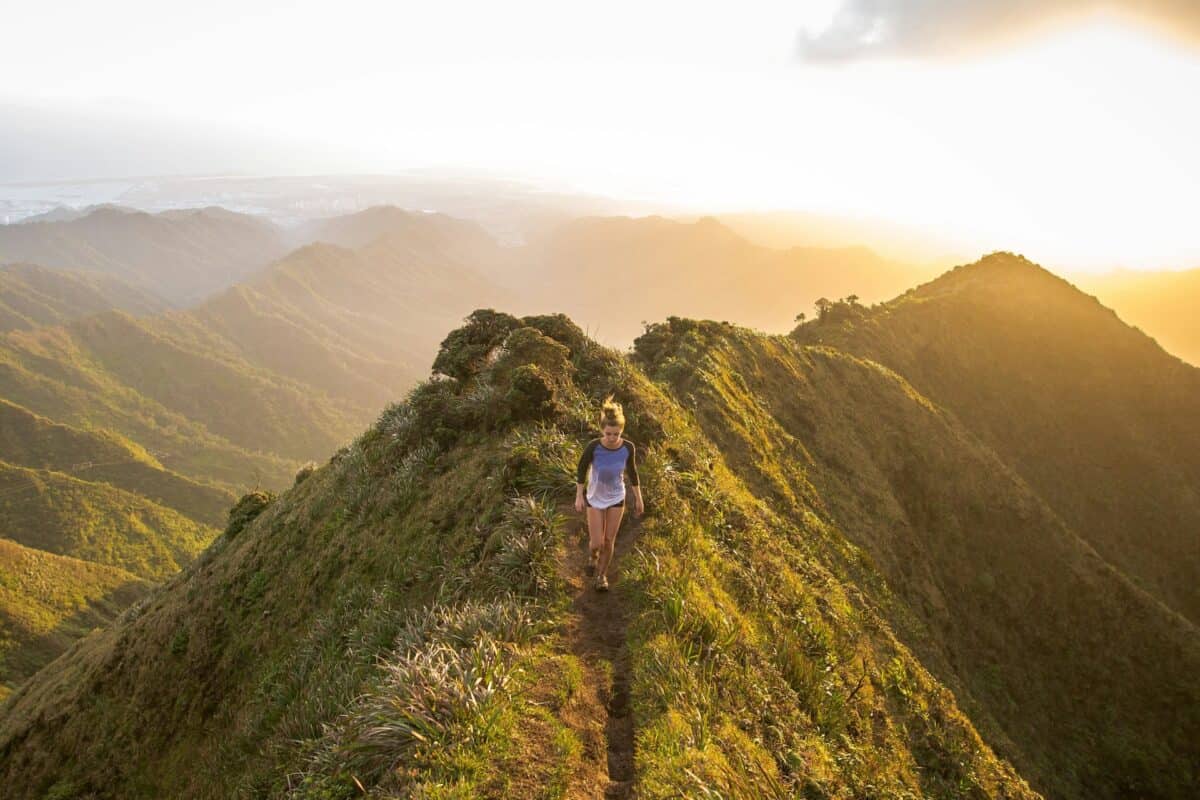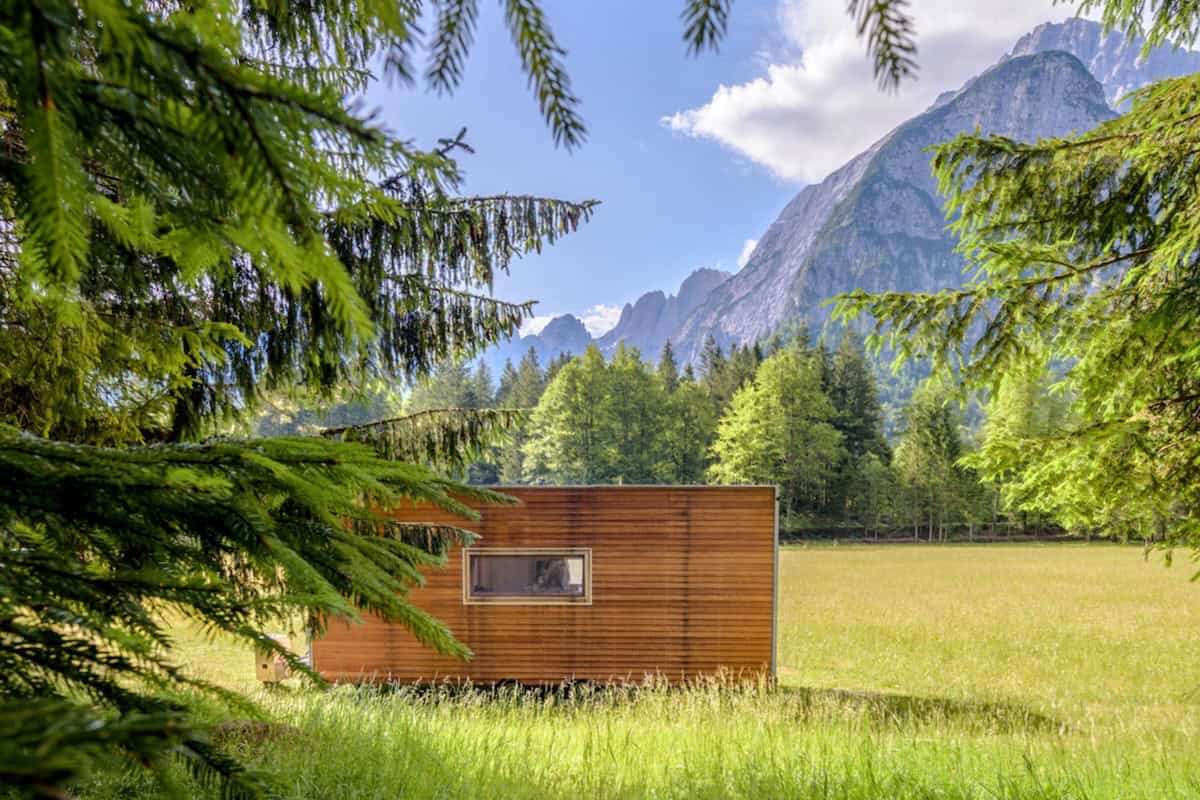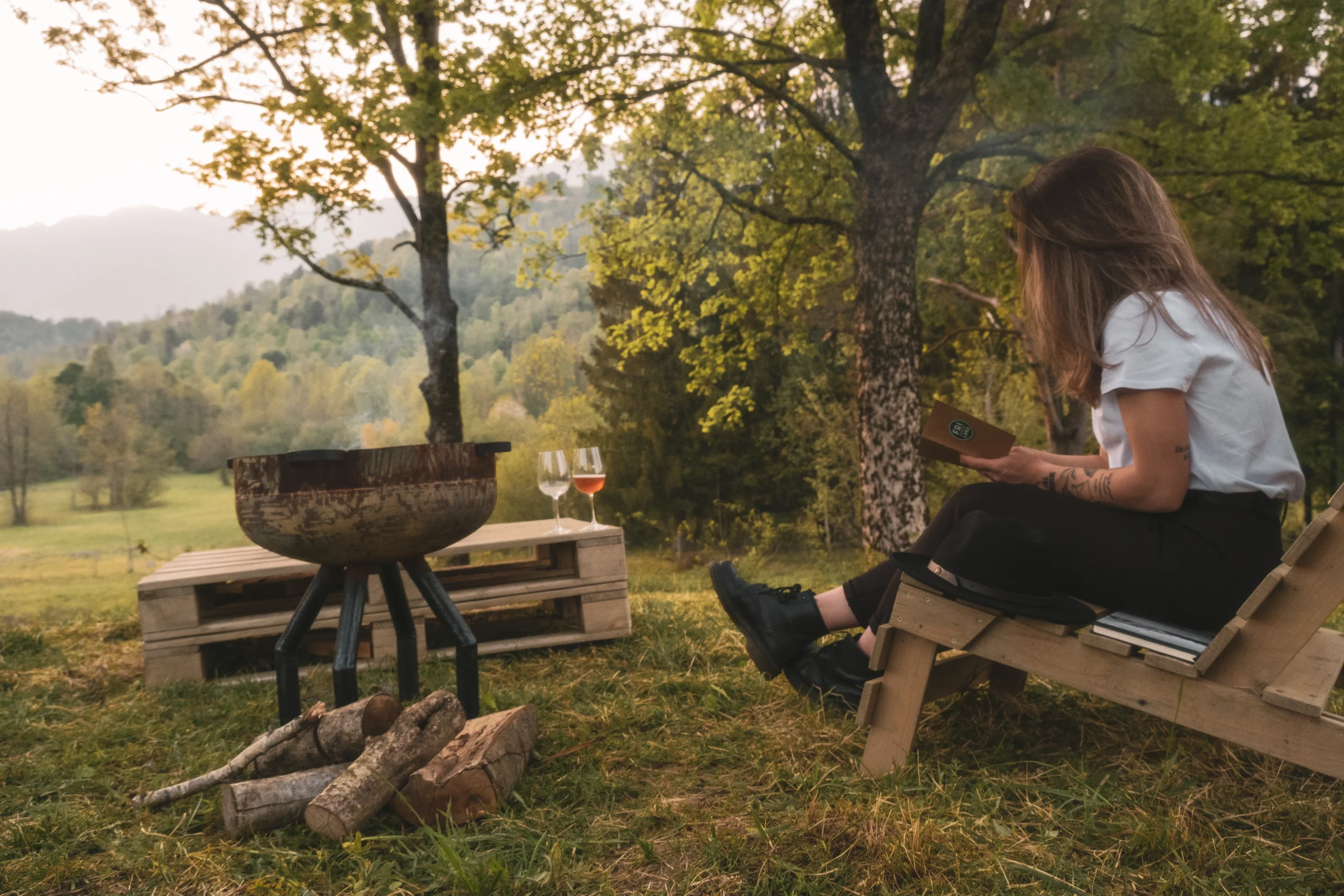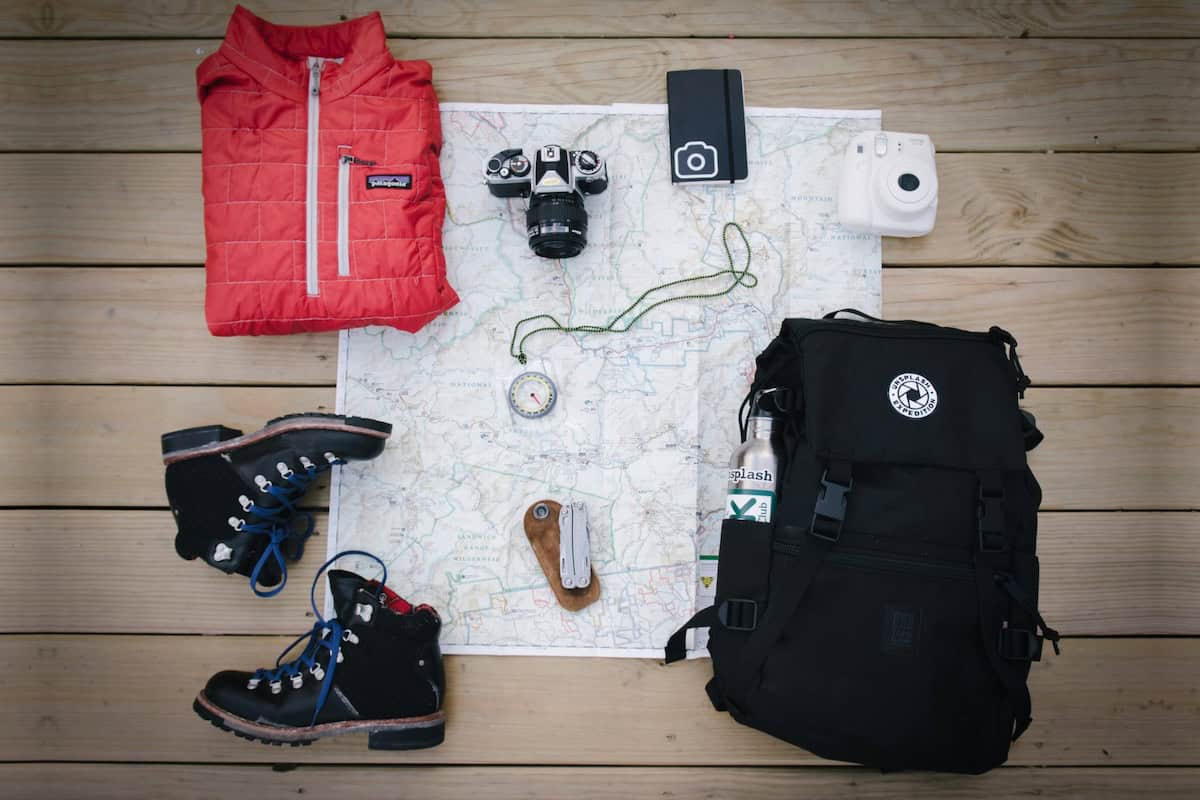Beginner’s Guide to Trekking
Starting trekking is very simple and will give you great satisfaction, but to learn how to do it without any issues, you’ll need some advice. That’s why we’ve gathered the most useful tips and created this beginner’s guide to trekking. By following these suggestions, you’ll embark on an experience that, besides helping you start hiking in the mountains without problems and awakening your senses, will take you through wonderful landscapes and unforgettable moments in a world waiting to be discovered.

Why Go Trekking?
Walking in nature is a great way to stay fit and recharge! Besides breaking the routine, it can benefit both your body and mind. Let’s look at some of the reasons:
- Exercise while having fun: You’ll see, it’s better than going to the gym! Captivated by the beauty of the landscapes, you won’t even notice that you’re in the middle of a great workout. It will be toning for your muscles and rejuvenating for your nerves.
- Improve your mood: Sunlight increases serotonin and vitamin D, while cortisol levels, the stress hormone, decrease. Plus, in nature, your senses awaken. The scents, colors, and sounds connect you with your surroundings, making it easier to forget daily stress.
- Discover wonderful landscapes: Needless to say, trekking will take you to some of the most beautiful places on Earth! There are truly untouched natural corners that can only be reached by trekking. And now, you can discover them all!
- Feel part of something bigger: Observing nature and animals makes you feel part of something greater. It’s an experience that can create a strong connection with the world and help you remember that maybe some of the things that stress you out aren’t that important, and that right there, at that moment, you’re really okay.
- Make new friends or strengthen the ones you care about most: Along the way and at rest stops, you’ll have plenty of opportunities to chat with new people and start new friendships. If you go with friends, you’ll find that walking a trail together can lead to completely new conversations, from light-hearted banter to deeper topics that can strengthen your friendship.
- Boost your self-esteem: I know, reaching the top of a mountain may seem like an impossible task at first! But it all starts with the first step, and before you know it, you won’t even notice the distance you’ve covered and how close you are to your destination! It will be a great satisfaction and a nice boost to your self-esteem!
- Find inspiration: Walking in open spaces frees your mind, leaving room for creativity. It’s not uncommon for a hike to bring new ideas and perspectives.
Choosing the Right Hike to Start
The first time you go trekking, you might be tempted to choose a trail based solely on the final destination. However, here are some important aspects to consider when choosing your first trail to avoid difficulties along the way:
- What’s your fitness level? Do you walk regularly to get around even in the city, or do you try to avoid exertion as much as possible? The advice is to be honest with yourself to evaluate the time needed and the elevation gain you can handle the first time.
- Start with short trails: In general, it’s recommended to start with a short and simple trail the first time you go hiking, maybe just a couple of hours, so you can ensure that you’ve chosen comfortable clothing and shoes that don’t hurt.
- Evaluate the elevation gain: Before setting out, it’s important to know how steep the trail will be and how much time it might add to your hike. First, ask yourself: do your knees struggle with ascents and descents? If so, it’s better to choose flatter trails or equip yourself with trekking poles. Keep in mind that an elevation gain of 300-350 meters generally requires about an hour of walking, but this can vary depending on your fitness level.
- Don’t focus only on the destination: When trekking, much of the time is spent on the journey, so the advice is not to choose based only on the final view. When selecting a trail, also consider the trail’s features: for example, does it pass through a shaded forest or an open meadow exposed to the sun? On a very hot day, you might regret not considering such aspects beforehand.
Planning the Itinerary

Following mountain trails is simple, but it’s just as easy to get lost if you’re not careful. Here are some tips to help you enjoy the hike without getting lost:
- Get informed before you go: Besides the photos of the trail and destination, it’s very useful to consult a map of the trail and check if there are any junctions you’ll need to navigate, and if so, which path to take.
- Follow the signs: Always stay on the trail and follow the signs and markers. Sometimes trails can be marked with colored signs on rocks (not so easy to spot if you don’t know in advance). Also, learn about the signage before heading out to avoid unexpected situations like these.
- Plan for breaks: Pack snacks in your backpack along with a water bottle. During the trek, you’ll soon be surprised by hunger pangs and the desire for a refreshing sip of water. Find out about the best spots to stop: having a picnic or taking refreshing breaks at scenic points will make the journey even more enjoyable.
- Allow time for the unexpected: If you want to plan an arrival time at your destination and a return time, keep in mind that there might be unexpected events during the hike. This way, if you want to take more breaks or unexpectedly find a stream to cross, you’ll have plenty of time to enjoy the experience calmly. Similarly, if you’re bringing children, consider that they may need more breaks. Remember that in the mountains, the sun might set at different times than you’re used to. By checking ahead, you can plan your day’s schedule more accurately.
Learning to Listen to Your Body
Enjoy the journey and don’t rush. To avoid getting sick in the mountains by overexerting yourself, here are some tips you can follow:
- Stay hydrated: Remember that even if it doesn’t feel strenuous, you’ll be doing physical activity and could lose a lot of fluids. Remember to drink regularly to stay hydrated.
- Start slowly and try to maintain a steady pace: Even if everyone is passing you and you feel slow, let them pass. To cover long distances, especially when you’re not yet aware of your limits, it’s crucial to go slowly and maintain a regular breathing pattern to avoid suddenly running out of energy and finding yourself out of breath and dizzy.
- Stop when you need to: After a while, you’ll learn the right pace for you and might even find that you don’t need to take breaks to catch your breath. In any case, listen to your body and assess when you need to take breaks to rest your legs and knees.
- Try to keep your head in the shade: Even if you’re in the mountains and the climate feels cooler, remember that it’s best not to expose yourself to the sun for too long.
Clothing and Equipment
Dress in layers. Nowhere is this more essential than in the mountains. You don’t need to start with super technical clothing, but there are some items and tools that are essential to have with you when packing your trekking backpack for the first time:
- Comfortable trekking shoes (and make sure they’re trekking shoes, not sneakers, as these might be slippery and cause nasty falls)
- A hat to protect you from the sun
- A waterproof jacket in case of wind or sudden bad weather
- A sweatshirt for cooler temperatures
- A trekking backpack to store the clothing layers you’re not wearing at the moment.
- A bottle of fresh water
- Tissues or wet wipes. They will come in handy in more than one situation
- Sunglasses
- Trekking poles if you need to help your knees
- Technical socks to avoid blisters
- A blanket to lie on for a rest in the meadow or for a picnic if the grass is a bit wet
- Sunscreen
Going Alone or with Company
Choosing whether to have company on your first hike or to go alone depends on the experience you’re seeking. Going alone can be very enjoyable and can help you focus better on nature and yourself.
However, for the first experience, it might be helpful to follow the trail with someone, even better if they’re experienced, so you can approach this world with the guidance of someone who can show you how to follow trails and navigate effectively.
Preventing Risks and Dangers in the Mountains
Now that you’re almost ready to pack your backpack and choose your first trail, it’s important not to overlook one last aspect. Every hike is an adventure, and trekking in the mountains is a wonderful experience, but it’s always good to be cautious to avoid dangers. Here are some actions to prevent them:
- Check the weather: Getting caught in a storm on a trail can be very dangerous. Don’t set out without first checking the weather forecast.
- Check for shelter points: If, despite the forecast, you’re caught in an unexpected storm, or if you find yourself running late and caught in the dark, it’s good to know where to take shelter. Along the trail, you’ll find refuges: by checking their location in advance, you can be prepared even for situations like these.
- First aid kit: Getting blisters on your feet is very common if the shoes aren’t suitable. Always having blister bandages with you can be useful. Likewise, it’s better to have basic medications on hand.
- Watch out for ticks: In the mountains, you may encounter ticks, insects, or animals that could be dangerous if underestimated. It’s better to set out informed and equipped with repellents to prevent bites.
- Emergency contact numbers: Before setting out, check the local phone numbers to call in case of need, and consider downloading a life-saving app.
- Inform someone: If you decide to go alone, inform a friend or someone who knows the area about your intentions, even better if they’re an expert in the area, so they can assist if necessary.
Conclusions
Great! Now you know all the essential tips to start your first trekking adventure, and you can choose your first trail. Here are some ideas:
Enjoy the journey and have fun!


